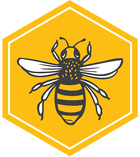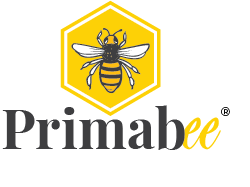The Comprehensive Guide to THC, CBD, and Their Therapeutic Synergy

A Brief Historical Insight into THC
Since the dawn of time, human societies have held a fascination with plants that affect consciousness and health. Cannabis, mainly, has been cultivated and used both recreationally and medicinally for thousands of years. The primary psychoactive component of cannabis, Tetrahydrocannabinol (THC), was identified in the mid-20th century, revolutionizing our understanding of the plant and its effects on the human body. Not just a recreational substance, THC was revered for its potential therapeutic properties, from ancient Chinese manuscripts that mentioned its use in surgical procedures to African tribes that used it to treat snake bites.
The Science of THC: Interactions with the ECS
The Endocannabinoid System (ECS) is undoubtedly one of the most fascinating systems in the human body. Humans and many animals have an ECS, responsible for maintaining homeostasis or balance in the body. When THC enters the system, it binds with the CB1 receptors found in high concentrations in the brain. This binding is the magic behind the psychoactive sensations linked with THC, from euphoria to munchies. But beyond the psychoactive effects, the ECS plays a pivotal role in regulating pain, appetite, memory, and mood, shedding light on THC's potential therapeutic implications.
The Dynamic Synergy of CBD and THC: A Comprehensive Understanding
CBD (Cannabidiol) and THC, although molecular cousins exhibit different effects on the human body. While THC can create euphoria, CBD is non-psychoactive and might even counteract some of the less-desired side effects of THC.
Here's a closer look:
• Mechanisms of Action: CBD doesn’t bind to CB1 receptors like THC. Instead, it influences the receptor’s activity, often modulating THC's effects, potentially reducing the anxiety or paranoia some people experience with THC alone(1).
• Entourage Effect: There’s a burgeoning belief in the "entourage effect," where the numerous cannabinoids and terpenes in cannabis might work better in tandem than in isolation(2).
• Clinical Implications: Some conditions may respond better to a combination of CBD and THC, offering a broader spectrum of relief(3).
• Consumer Experience: For many recreational users, the combined effects of CBD and THC provide a more balanced and pleasurable experience.
Top 7 Health Benefits of THC: A Deeper Dive
• Pain Relief: Chronic pain affects millions worldwide. THC has shown promise in providing relief by altering pain perception pathways in the brain. Its potential as an alternative to opioids is fascinating, given the current opioid epidemic.
• Improved Digestion: Beyond inducing "the munchies," THC may have more profound implications for the digestive system. It might be an asset for chemotherapy patients, who often struggle with nausea and appetite loss.
• Sleep Aid: The relaxation effects of THC can be a boon for insomniacs. The cannabinoid may extend the deep sleep phase, which is crucial for the body's repair processes.
• Neuroprotective Qualities: There's emerging evidence that THC might have neuroprotective properties, offering potential benefits for neurodegenerative diseases like Alzheimer's and Parkinson’s.
• Stress and Anxiety Reduction: Used judiciously, THC can be a potent tool against stress and anxiety. The key lies in dosage; while low to moderate doses might induce relaxation, high doses can exacerbate anxiety.
• Muscle Relaxant: People with multiple sclerosis often experience muscle spasms. THC can potentially offer relief by reducing these spasms.
• Eyesight Protection: Glaucoma leads to increased pressure within the eye. Early research hints that THC might help reduce this pressure, offering potential protective effects.
The Enigma of Dosage
The adage "less is more" rings particularly true for THC. It's biphasic in nature, meaning low and high doses might lead to opposite effects. While a modest amount might alleviate anxiety, a high dose can induce it. Recognizing this, and adjusting consumption accordingly, is vital for both medicinal and recreational users.
CBD, THC, and Primabee: Crafting the Future of Wellness
In the ever-evolving world of natural wellness, Primabee stands at the forefront, dedicated to harnessing the full potential of cannabinoids. Our meticulous approach ensures the creation of products that offer the best of both worlds: the individual strengths of CBD and THC and their powerful synergy. As research continues and our understanding deepens, Primabee is committed to being your trusted partner in the journey toward holistic health and well-being.
Disclaimer: This content is for informational purposes only and does not substitute for professional medical advice, diagnosis, or treatment. Always seek the advice of a healthcare provider regarding medical conditions or treatments.
References:
• Russo E.B. (2011). Taming THC: potential cannabis synergy and phytocannabinoid‐terpenoid entourage effects. British Journal of Pharmacology. ↩
• Ben-Shabat S., et al. (1998). An entourage effect: inactive endogenous fatty acid glycerol esters enhance 2-arachidonoyl-glycerol cannabinoid activity. European Journal of Pharmacology. ↩
• Whiting P.F., et al. (2015). Cannabinoids for medical use: A systematic review and meta-analysis. JAMA. ↩





Leave a comment